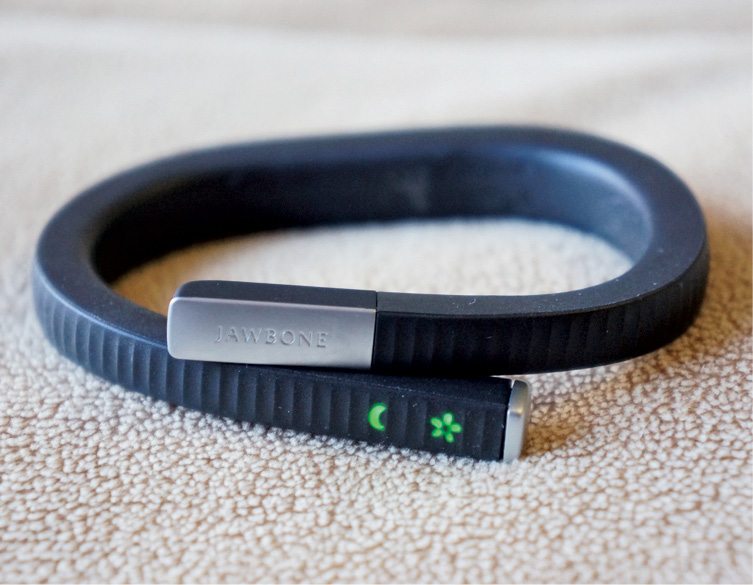“The best project you’ll ever work on is you,” said a wise man once. Most of us being avid DIYers working on interesting electronics projects, adding a project to work on our health would be considered a welcome move. Especially when there is a technological twist added to it. In this buyers’ guide, we take a look at which activity tracker could be your best bet at getting fit.
The first thing to do before buying a activity tracker is to figure out why you really want it. Are you looking for a lifestyle tracker that you would wear all day like a wristwatch, or an tracker to help you train for your next health goal or achieve a faster five kilometre run?
Lifestyle all-day trackers are simpler devices that show the number of steps you have walked or run, or the stairs you have climbed. These can show you information comparing the number of active minutes in a day, or even the quality of your sleep by comparing your regular and rapid eye movement (REM) during sleep. Most of the current ones also have software features that let you compare yourself to a group of friends and set up some healthy competition throughout the day.
The training trackers have much more sophisticated features like sensors to detect heart rate, speed, pace, lap times and more. These features are in addition to everything that an all-day lifestyle tracker can offer.

Features to look for in a Activity Tracker
Once you decide on what kind of tracker you need, it is time to choose one from the various options the market offers. Fortunately, the competition has become so strong today that you have multiple good options to choose from.
Accuracy. As anyone who has worked with sensors would know, it is very difficult to get constantly accurate readings once the activity tracker is taken out of an ideal environment.
Unfortunately for some activity trackers, these get one of the most difficult places to work on—a sweaty, flexing, human wrist that always seems to find a way to bang into something. So check whether the activity tracker you are considering works as well during a run as it does during your sleep.
Battery life. In most cases, the training tracker would have much shorter battery life than an all-day tracker because of the increased functions and more precise sensors that run in it. While devices like the Jawbone UP24 feature a two-week battery life (it initially came with a one-week battery life that doubled after a firmware update), the Fitbit Charge HR has four-day battery life, and the Mio Link can muster only six to eight hours battery life. Are you prepared to charge your tracker frequently?
Compatibility. Not all trackers are created equal. Some trackers might have very good apps for iOS, but not so good ones for Android, and their Windows or BlackBerry OS support might even be non-existent. Brands like Fitbit have a wireless sync dongle, which is a small universal serial bus (USB) device that can be plugged into your computer to link your tracker with Fitbit Connect. Some trackers like the Jawbone UP24 require a smartphone with Bluetooth Low Energy. So check compatibility with the operating system and smartphone you use.
Durability. Trackers come in a variety of materials and shapes. While some are designed for pure aesthetical reasons, others may have been designed with the aim to maximise functionality. So if looks alone aren’t your thing, go for a tracker that can stand the test of time. Trackers like Jawbone UP24 come with a removable cap that you could lose in a few months. Trackers with displays usually feature plastic screens that can scratch easily, while expensive models like the Apple Watch come with Ion-X or sapphire crystal faces that are extremely resistant to scratches. How rough are you with your electronics?
Water resistance. This should not have been in this list, because a activity tracker that is being used in sweaty and moist conditions with a very good chance of getting drenched, or used while swimming, should have waterproofing by default. However, most of the trackers available have various degrees of water resistance. Some manufacturers call their devices shower-resistant but not water-proof, while others say that you can wear it in rain but not in shower!
Top activity trackers
The following top five activity trackers are being listed after taking the average of various reviews and guides across the web.
Best value tracker: Fitbit Charge HR. Offering the best bang for buck, the Fitbit Charge HR has outshone Jawbone UP24, which was one of the most popular wristbands in 2014. It comes with a display, heart rate tracking and an altimeter—which were missing in Jawbone UP24—while still maintaining a very minimalistic design. Perfect if you are looking for a device that offers a lot of value for your precious money.
Best designed tracker: Jawbone UP4. The latest tracker in the UP portfolio, it makes up for the lack of a display over the Charge HR by packaging itself in a very attractive design and featuring double the battery life. The Jawbone wristbands have also been known for their superior sleep tracking and better-designed smartphone apps. However, it shoots itself in the foot due to an annoying clasp that frequently gets lose and a big price tag to boot.
Best full-option tracker: Garmin Vivoactive. This device is about 50 per cent more expensive than a Fitbit Charge HR, but makes up for the extra cost by featuring built-in sports apps, movement alerts, call-, text-, email- and calendar notifications, an excellent touchscreen and in-built GPS. Garmin claims that the battery can last up to three weeks in tracking mode, or ten hours in GPS mode. It also has a rating of 5 ATM waterproofing, which means you can swim, sweat and shower with this tracker on your wrist.
Best stealth tracker: Withings Active Pop. Some people would do anything to make themselves not seem like a geek. This device is cleverly disguised as an analogue watch (with no backlight though), but comes with activity tracking, decent sleep monitoring and a whopping eight months of battery life. On the flip side, its step counter does not work properly if you don’t move your arm while walking. And if you were to activate its silent alarm mode, the battery life drops to more than a third of what you were promised. Pop!
There are so many options in the market that you might be able to find something that suits you much better than our top picks. So stop procrastinating and get yourself a suitable tracker to begin your new tech-enabled fitness regime, if you have been dreaming about it.
Like this article? You may also like other wearable articles
Dilin Anand is a senior assistant editor at EFY. He is B.Tech from University of Calicut, currently pursuing MBA from Christ University, Bengaluru






